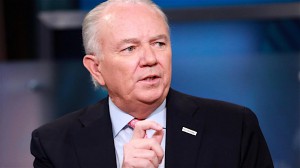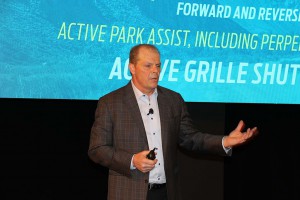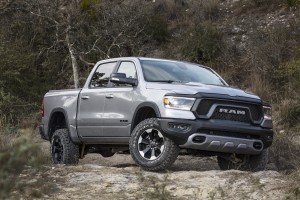
AutoNation CEO Mike Jackson called July a "clunker" when it came to the sales results, adding that every sales year has one.
Analysts and industry executives have been pointing to the second half of this year, expecting sales to decline so July’s results weren’t a complete surprise.
However, with a second quarter GDP at 4.1% and promises by President Donald Trump that the good times are going to continue to roll, at least economically, what caused the slump in car sales to occur as the negative nellies said it would”
It’s multiple factors, starting with vehicle loan interest rates. The annual percentage rate (APR) on new financed vehicles averaged 5.74% in July 2018 compared to 4.77% in July 2017, according to Edmunds.com.
The new figure represents the largest year-over-year jump that Edmunds experts have seen so far in 2018. It also means that monthly payments, the measure by which most buyers shop, were up nearly $30 a month to $533.
(Automakers watch July sales get hammered. Click Here for the story.)

Ford Sales VP Mark LaNeve noted the company's sales were down 3.1% in July, in part, because it ended production of the Focus sedan and was winding down the Fiesta.
“Interest rates might be down slightly month-over-month, but they’re still hovering near a nine-year high,” said Jeremy Acevedo, Edmunds’ manager of industry analysis.”With more Fed rate hikes ahead, it’s not likely that APRs will be going down anytime soon.”
Another driver of sales are the always popular zero-percent interest rate deals. However, those options are nearly non existent, accounting for just 6.92% of sales in July 2018, compared to 11.34% in July 2017 and 11.18% in July 2013. Edmunds analysts note that this is the lowest share of zero percent finance deals seen in July since 2005.
“Zero percent finance deals typically peak in summer months as a tried-and-true automaker method of spurring outgoing model-year vehicle sales, so this appears to mark the end of a fairly long-lived tradition for the industry,” Acevedo said.
“While inventory isn’t at the alarming level it was at this stage last year, how automakers navigate their model-year selldown will be critical through the rest of the year as the market contracts and prices continue to rise.”

Ram set a July record for sales, further confirming the continued growth to truck sales in the current market.
July’s poor performance is also measured against a better than expected first half of the year, due in some measure to Trump’s tax cuts. However, between the higher interest rates and a plethora of cheaper used cars that are nearly new, July was just a bad month, at least according to one auto executive.
(Click Here for more about Ford’s small truck possibility.)
“Every year there is a clunker of a month,” Mike Jackson, chief executive of AutoNation Inc, the largest U.S. auto retail chain, told Reuters. “I think July will be that month from a retail point of view.”
U.S. new vehicle sales rose in the first half of 2018, boosted in part by an overhaul of the tax system, but are expected to fall in the second half amid rising interest rates and a glut of cheaper, nearly new used vehicles. If the trend continues in the second half, and it’s expected to do so, it will undermine new vehicle sales in the coming months.
“We think there’s probably a number of folks looking for buying opportunities in the used car market,” said Charlie Chesbrough, senior economist for Cox Automotive.
In some cases, the decline can be attributed to the shift away from cars toward trucks, crossovers and sport-utes. Ford Vice President Mark LaNeve noted the company ended production of its slow selling Focus subcompact sedan and the Fiesta is winding down.
That said, automakers were also looking to keep a little more money in their coffers. Ford executives noted that the average incentives per vehicle dropped $230 compared to a year ago. As a result, average transaction prices rose 3% to $35,359 in July, according to Cox Automotive. The trend is being driven primarily by sales of more expensive vehicles — not necessarily by price increases.
“The primary forces at work in the current new-car market, including supply, demand and pricing, are pushing transaction costs to a level some buyers aren’t willing to pay,” Cox Automotive analyst Karl Brauer said in a statement. “We saw high fleet sales from a number of automakers in July, but even that wasn’t enough to hit positive overall numbers in July.”
(To see more about TDB’s first drive in the 2019 Aston Martin DBS Superleggera, Click Here.)
In spite of July’s results, IHS Markit analysts projected full-year new-vehicle sales to hit 17 million vehicles, a very healthy rate.
